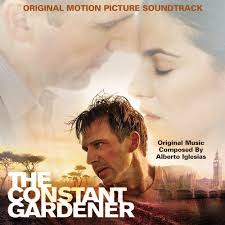
Here are some of my thoughts about the movie THE CONSTANT GARDENER. I watched it some time ago and found it really interessting
RELATIONS BETWEEN THE WESTERN WORLD AND AFRICA
In the movie “The Constant Gardener”, relations between development- and industrial countries are “beautifully” and accurately illustrated. For many years, the differences between the poor countries in Africa and the consumer societies in the western world have been huge and many. Corruption and unfair abuse of power have been a problem for decades. In the movie, a typical corrupted industry is depicted. An alliance established by tainted, capitalistic leaders in Europe and corrupted, dishonored Africans shows us the dishonest co-operation that has existed for many years, and still does.
The problem is manifested in the movie through a pharmaceutical company pretending to have divine power when it comes to managing the lives and deaths of the innocent population. The movie is a reaction to this industry, which still exists. While doing research for this essay, I read that the movie is based on actual happenings from Kenya. Pharmaceutical companies are actually testing drugs on the citizens, resulting in many deaths. The bodies were, and they still are, being buried and forgotten for all time.
The relationship between the industrialized north and the poor countries in Africa may be good officially. Embassies and commissariats are common, even in Africa, but in every part of our world there is deceitful underworld accessible, and too many people takes part in it. In today’s Africa despotism and unjustified dictatorship still takes place in numerous states, the leaders here are often, sadly, easily persuaded to sacrifice their own people’s well-being for their own winning.
The problem is, as I said, very well portrayed in the movie, which can be categorized as a conspiracy thriller. The story-telling is non-linear, and the fact that it is jumping back and forth, back and forth, truly underlines the confusing and cruel reality that are to be found in the conspiracies. It is pretty interesting to see how the passive main character, Justin, slowly starts to dig and seek after the truth, and how his wife, Tessa, is shown as a confident and offensive character – even though she dies pretty fast. This gives Justin’s passivity time to grow throughout the movie as he solves the mystery and catches up with the criminals behind the conspiracy.
The relationships are once again manifested through the scenes from the slum-area in Kenya. Using hand-held cameras the director creates a feeling that this is some sort of a documentary showing the sad contrasts, which literally are like black and white. Midways in the movie, a camera that films a golf course which apparently is reserved only for white people, suddenly starts to pan to the left filming a place consisting of small houses falling to pieces –the slum. This was an incredible shot manifesting the huge contrasts between the industrialized north and the developing Africa – between blacks and whites.
SCENE ANALYSIS
“The Constant Gardener”. The first scene depicts Tessa’s leaving for Loki, a scene in which we understand that there’s a special relationship between her and the diplomat Justin Quayle. She tells him to leave the airfield because of the heat. My personal interpretation of this scene may seem peculiar, but nevertheless is it important for me to give a picture of it. After the valediction, Tessa walks self-confident towards the plane as the picture fades into white. Now that I know the outcome of her send-off (she dies), I interpret the fading as some sort of a walk into the heaven. The fading brings us to the next scene of significance; the beach-scene. There’s absolutely no exchange of words in this scene, only fascinating and curious use of camera adjustments. The angles used in this scene are interesting, in most parts of this sequence the camera leans towards left or right, providing us with close-ups of both the beach and the ruined vehicle. A symbol used in this lake-scene is the animal life, as something bad happens – (the murder of Tessa and her companion) – vast flocks of birds collectively escapes the immense area in a hurry. These amazing shots (obviously taken with the help of a helicopter or a plane) show us great pictures from the lake and the nearby nature. I believe that the last and most important scene is the one in which sandy conveys the sad and heartrending report to Justin. The scene is captivating because of the acting performances. Ralph Fiennes’ recital is mesmerizing. It is quite interesting to see how the camera is used in this scene; the camera is focused at Justin during almost the entire scene, showing us how his reaction to the devastating message slowly unfurls. The paradox is how he is keeping his plants alive while he is receiving the message – he is gardening – at the same time as his wife has withered. Seems to me like he is continuously (constantly) searching for the truth – using his familiarity as a never-ending gardener to dig up information - from this time on – using gardening as therapy because he can’t figure his problems out within (internally).
Ingen kommentarer:
Legg inn en kommentar